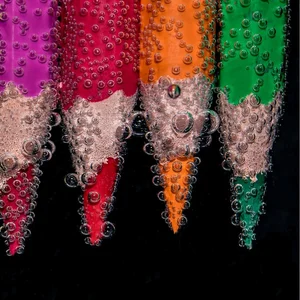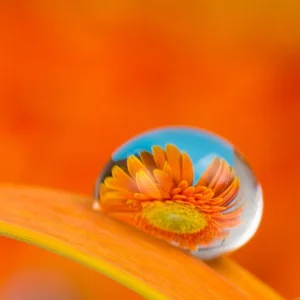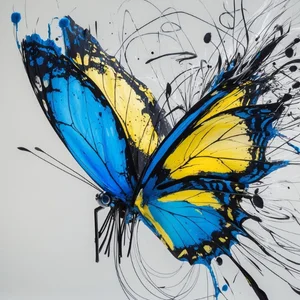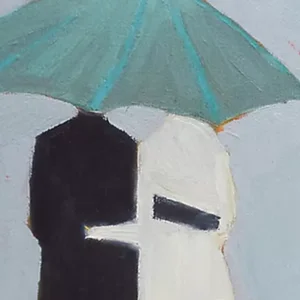And Why That’s a Beautiful Thing
For a long time, I thought of gratitude as a remedy – something to turn to when life felt heavy or uncertain. The formula seemed simple: when life felt like it was tipping off balance, gratitude could step in, straighten things out, and leave me lighter. There is some basis for that: you can’t feel anger and gratitude at the same time. The only problem is that it doesn’t help with addressing the source of frustration, sadness, anger, pain. And it’s not long-lasting.
It took me a while but I’ve finally understood that gratitude isn’t a quick fix. And honestly, that’s its greatest gift.
I won’t tell you what gratitude should be, but I am inviting you to explore together what it could mean when we stop trying to fit it into a neat little box.
The Illusion of Instant Gratitude
In the beginning, my relationship with gratitude was rather transactional. Feeling off? Write three things you’re thankful for. Feeling stuck? Shift focus to the good stuff. And yes, it worked. It was like flipping a light switch in a dim room. For a moment, I could see more clearly. But the light would flicker out just as quickly.
This left me wondering: Why isn’t gratitude fixing things the way it’s supposed to? Is it me?
In hindsight, I see it. I wasn’t engaging with gratitude; I was using it. I wanted gratitude to make my life feel easier, to solve my problems, to erase my discomfort. But gratitude isn’t a tool for avoidance. It’s a practice of presence, and this distinction changes everything.
When Gratitude Feels Hollow
The turning point came during a particularly raw season of my life – a time when no amount of “count your blessings” could soften the confusion. I tried. I listed things I was grateful for, but the words felt flat, empty. And I was still in the raw.
I’d been treating gratitude like a vending machine: insert positivity, expect peace. But real gratitude doesn’t dispense easy answers. It’s not about bypassing pain; it’s about learning to sit with life’s complexity. Gratitude doesn’t erase discomfort; it holds space for it while also allowing room for light.
Moving Beyond the Checkbox
I started to gradually tweak the questions: from Why it doesn’t work to What do I need to understand?
One step after the other I learned that living gratefully isn’t about ignoring the hard stuff or plastering over struggles with a list of blessings. It’s about gaining and implementing a new kind of awareness into your daily experience. It’s about noticing what’s small, quiet, and often overlooked, even when things feel broken.
Here are some reflections that reshaped my understanding of gratitude:
Gratitude Isn’t a Distraction. It’s a Lens.
Gratitude doesn’t ask you to turn away from what’s hard; it invites you to look at it differently. It’s not about forcing yourself to be unreasonably thankful for every challenge but finding threads of light in the middle of them – a comforting presence, a moment of unexpected beauty, or the strength to keep going.
Gratitude Takes Time.
We are used to glorify the quick results. The quick pill – pop one and you’ll feel better, lose the weight – no need to put in any effort, you can even eat those donuts. But gratitude isn’t instant. It’s a practice. It’s gradual. It takes awareness, curiosity, willingness, persistence, and faith. The roots of gratitude grow quietly, often without your noticing. But when life shakes you, those roots are what hold you steady.
Gratitude Isn’t About “Should.”
I used to pressure myself to feel grateful focusing on what I thought should appreciate. But the forced gratitude felt hollow. What changed was allowing myself to notice what genuinely touched my heart and look deeper for layers of understanding. I returned to my childhood passion: ask why. Why am I grateful for this? In what way am I grateful?
The Beauty of Slow Transformation
Here’s one thing no one tells you about gratitude: it doesn’t transform your life in a flash. It transforms you quietly, steadily, from the inside out. Gratitude’s magic isn’t in its ability to erase difficulty, but in its ability to coexist with it.
When we embrace gratitude as a way of being, it becomes less about striving for perfection or checking boxes and more about learning to live in harmony with life’s imperfections. Gratitude teaches us to slow down, to pause long enough to notice what’s already here, to see beauty in the ordinary and strength in the struggle.
An Invitation to Reflect
If you’ve ever felt like gratitude was failing you, maybe it’s time to reframe the questions.
What would happen if you let go of the idea that gratitude needs to work quickly?
What would it be like if you turned this into a practice of love and awareness?
Gratitude doesn’t promise to solve your problems. But it softens the edges and deepen your understanding, it creates room for nuances and angles you wouldn’t see otherwise.
Gratitude lives in the stillness, not in the rush.
Shared with Love,
Gabriela
I don’t pretend I KNOW. I write from my experience and from my heart hoping that what I have to share will be the support someone needs on their journey. I reserve the right to be wrong and change my mind as I grow in my own understanding.
If you’re ready to take that step, I’d love for you to join the subscription-based version of the blog. You’ll receive exclusive content that meets you where you are, whether you’re searching for clarity, courage, or simply a moment of stillness and guide you deep into your journey.






